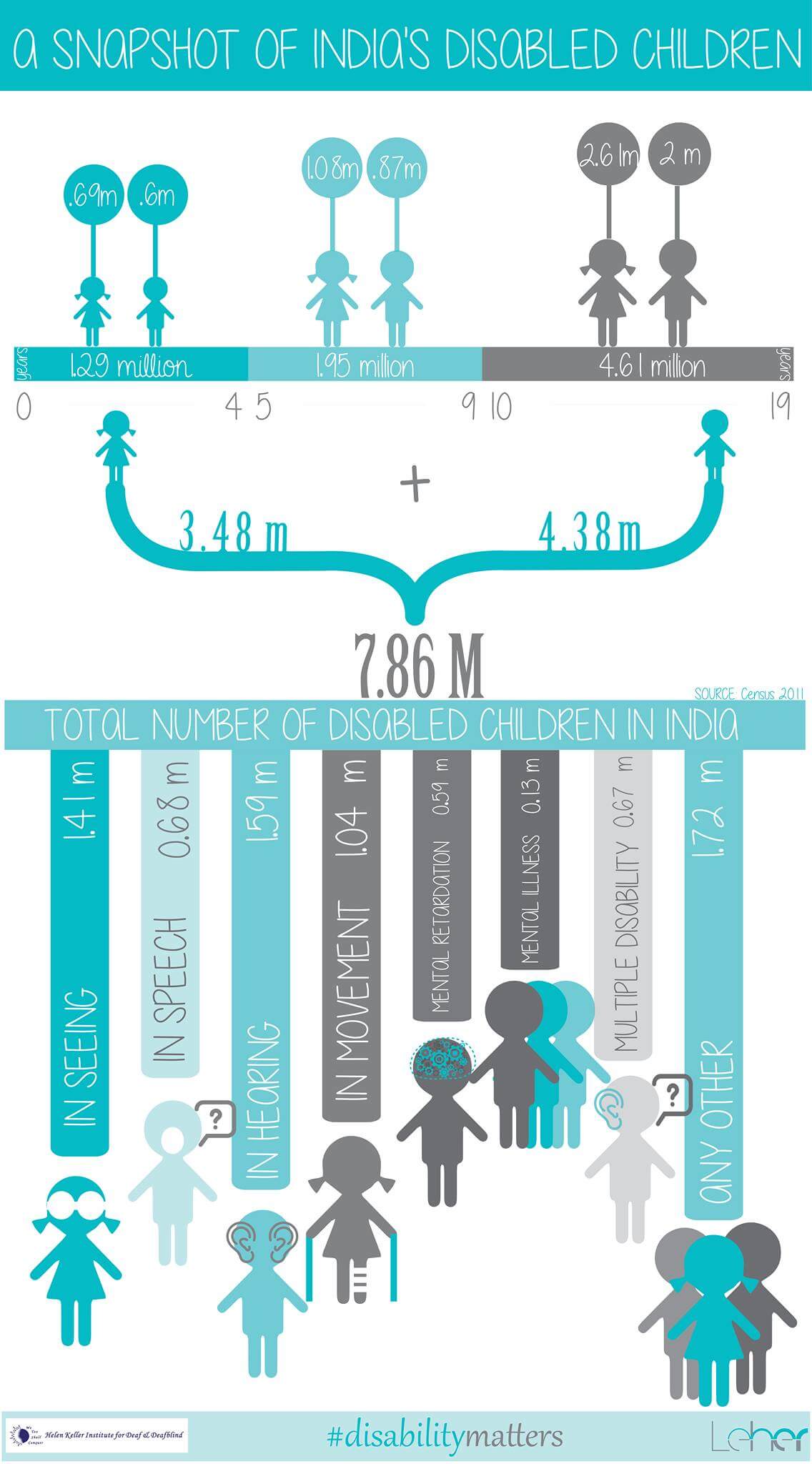
A snapshot of India’s disabled children
Disability is a multi-dimensional and complex construct with no single universally accepted definition. While the definition differs across countries, the evolving socio, legal and political scenario within India lends itself to the changing definitions and therefore difficulty in collecting and tabulating reliable data.
Today, India awaits to bring the Persons with Disabilities (Equal Opportunities, Protection of Rights and Full Participation) Act, 1995 in line with the 21st century understanding of the rights of persons with disabilities as captured in the UN Convention on the Rights of Persons with Disabilities (UNCRPD) by looking at a wider spectrum of disabilities (adding 19 impairments) including Autism Spectrum Disorder, Blindness, Cerebral Palsy, Chronic neurological conditions, Deafblindness, Hemophilia, Hearing impairment, Intellectual disability, Leprosy cured person, Locomotor disability, Low vision, Mental illness, Muscular dystrophy, Multiple sclerosis, Specific learning disabilities, Speech & language disability, Thalassemia, Sickle cell disease and Multiple disability.
Children with disabilities are often the most marginalised section of society, with minimal inclusion in society and almost no access to state services. Their childhoods often lost behind closed doors.
While data on children with disabilities in India might not be accurate or accessible, we don’t need more data to start working for and with children with disabilities. #disabilitymatters
